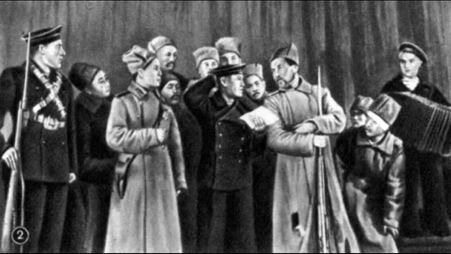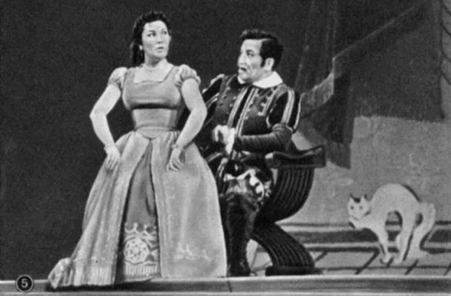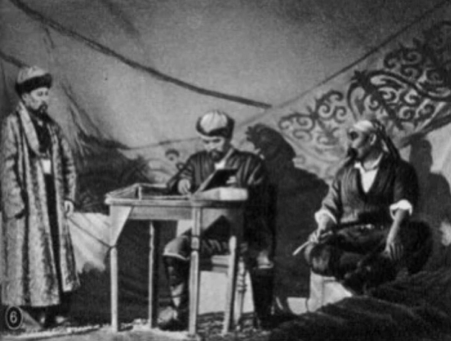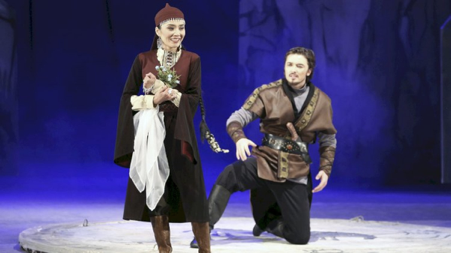The Mukhtar Auezov Kazakh State Academic Drama Theater is one of the oldest theaters in Kazakhstan. Over its almost 100-year history, it has become a symbol of the Kazakh theatrical art. The team continuously strives for new creative achievements and promotes important cultural values.
The first professional creative team - the Kazakh State Academic Drama Theater named after Mukhtar Auezov was founded in 1925 in Kyzyl-Orda, and opened on January 13, 1926 with an excerpt from the play "Enlik-Kebek" by M. Auezov. The formation and creative development of the theater is closely connected with such prominent figures as the first director Dinshe Adilov and the first director Zhumat Shanin. The artistic troupe included masters of folk art: E. Omirzakov, S. Kozhamkulov, K. Badyrov, K. Kuanyshbayev, K. Zhandprbekov, A. Kashaubaev, I. Baizakov, K. Munaitpasov, Z. Atabayeva, Sh. Baizakova, M. Shamova, etc.
In 1929, the theater moved to the new capital of the republic - the city of Alma-Ata. Talented artists who have become the hallmark of the theater came to the theater: Kulyash Bayseitova, Zhusupbek Yelebekov, Shara Zhienkulova, Kamal Karmysov, Kalken Adilshinov, Biken Rimova and others. During this period, the troupe expanded its repertoire with a variety of dramatic works. In 1934, new creative groups were created on the basis of the theater – the State Opera and Ballet Theater, the Philharmonic and Kazakhconcert.

"The Man with the Gun" by Pogodin, 1940
In 1937, the theater received the status of "academic". The repertoire includes productions by M. Auezov, B. Mailin, I. Zhansugurov, G. Musrepov, S. Mukanov, as well as Russian and foreign classics.
In 1940, the director A. Tokpanov staged the play "Abai" by M. Auezov. By the way, the role of Mukhtar Auezov, who worked as the head of the literary department in 1932-1938, in the formation and development of the theater was invaluable. In art plays and articles, the famous artist of the word contributed to the definition of the direction of the national stage art. He translated the masterpieces of world drama in order to enrich and diversify the repertoire.
In 1946, in honor of the 20th anniversary, the theater was awarded the Order of the Red Banner of Labor. In 1952, the theater was awarded the USSR State Prize for the play "Abai". In 1954, bright actors joined the theater troupe: N. Zhantorin, I. Nogaibayev, T. Zhailybekov, etc. – all of them were graduates of Alma-Ata, Moscow, Leningrad and Tashkent. In 1958, in Moscow, at the "Days of Literature and Art of Kazakhstan", the theater was presented with five performances.

"The Taming of the Shrew" by Shakespeare, 1943
In 1973, at the International Theater Festival of Asia, Africa and Latin America in Iran, the play "The Mother Field", based on the work of Chingiz Aitmatov, was successfully shown, and in 1984, at the International Festival "Theater of Nations" in France, the performance "Kozy Korpesh – Bayan Sulu" was received with great interest by the audience" Gabita Musrepova. These successes were associated with the name of the graduate of GITIS, who later became the People's Artist of the USSR, Azerbaijan Mambetov. The concept of the "Mambetov theater", the "Mambetov era" was formed in the cultural space. Viewers from all over the world expressed admiration for the theatrical art of Kazakhstan, and there is practically no region and district left in the republic where the iconic Auezov Theater would not have toured.

"Amangeldy" by Musrepov, 1952
The XXI century was marked for the M. Auezov Theater by a new contribution to the understanding of the interpretation of plays. Performances "Bright Love" by S. Mukanov, "Legend of Love" by G. Musrepov, "Before Sunset" by G. Hauptman, "Hamlet" by W. Shakespeare, "Three Sisters" by A. Chekhov, "Possessed" by D. Isabekov, "Evening in the Empire" by S. Asylbekuly, "Kozhasyr is alive!" by T. Nurmaganbetov and many others were highly appreciated by the audience.
The theater actively interacts with foreign colleagues. The first successful experiments in this direction were such performances as the production of the Russian playwright, director N. Ptushkina "Othello" (W. Shakespeare) and the work of the Lithuanian director J. Vaitkusa "The Korkyt Spell" (Iran-Gaip).
Currently, the theater has a high creative potential and is being integrated into the world stage space. The theater troupe has successfully toured Iran, France, Germany, Turkey, Great Britain, Japan and other countries.

"Enlik-Kebek", 2023
Note:
The Kazakh Drama Theater named after M. Auezov is located on the west bank of the Esentai River along Abai Ave. in Almaty. In 1928-1963, the Kazakh Drama Theater did not have its own premises, it was located in the current building of the Young Spectator Theater. In 1981, the creative team moved into a new building, which includes two halls with 800 and 250 seats. Architects O. Baymurzaev, A. Kaynarbayev and M. Zhaksylykov created a monumental but expressive structure and in 1982 were awarded the State Prize of the Kazakh SSR. The sloping walls of the southern facade, separated by figured pylons, add solemnity to the building. The decoration with embossed marble tiles, the monotony of which is broken by vertical strips of anodized aluminum, is complemented by decorative lamps. Massive, made of forged metal, they are decorated with national ornaments. The northern facade, which is overlooked by several balconies of the recreation areas, is lined with seashell and smooth marble panels. The building is one of the most interesting architectural structures in Almaty.




